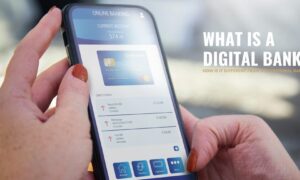Today, a car is a necessity. It is needed to get to and from work or, in some cases, for work. A vehicle is also a necessity for people to get to and from the grocery store, doctor’s appointments, and everywhere else they need to be. In some areas, walking to these places is not possible.
That’s why it is important that everyone who needs a car has one. Unfortunately, having the funds to buy a car can be difficult. Fortunately, there are many options available to help people get the financing they need to purchase a new or used car. This financing option is called a car loan, and there are a variety of types that can meet almost anyone’s financial situation.
What is a Car Loan and How Does it Work?
A car loan is exactly what the term says: it is a loan to help with the purchase of a new or used vehicle. An auto loan is usually an unsecured instalment loan that can only be used to purchase a vehicle either at an approved dealership or from a private party, depending on the terms of the loan and the financial institution.
When working through a reputable lender, a car loan is quite simple. The loan is an instalment loan, but for a higher amount and longer-term than other instalment loans. Although an instalment loan is considered an unsecured loan, the car purchased acts as collateral. This secures the loan and allows the lender the ability to repossess the vehicle if payments are not made.
When a car loan is received, it is in the amount of the purchase price of the vehicle with a set amount of interest added to the total. This total is then broken into convenient and equal monthly payments. This makes it easy for individuals to pay off the loan since they have the same amount due each month.
When getting financing for a vehicle, there are several options available. Some offer better interest rates or incentives, and others work better for individuals who have less-than-perfect credit scores.
Dealership Financing
Dealership financing is the best option for those who do not want to roam around to different places to get their work done. There are many car dealers in Christchurch that offer financing through them. This can make it easier for individuals to buy and finance their vehicles in one location. Both new and used car dealerships can offer programs that are attractive to their customers. These can include:
- Buy Here, Pay Here. This type of financing is done through the dealership itself. Often, these are used car facilities that provide an easy payment plan for the buyer of a vehicle. Many offer payments that can be easily paid at the dealership.
- Dealership Financing. Some dealerships offer financing directly from their company. These are similar to traditional bank loans but are provided by the dealership itself. These are common at dealerships that offer new vehicles.
- Indirect Financing. Some dealerships offer indirect financing. This is where they work directly with a variety of banks and other financial institutions to offer a range of financing options for their customers. Often, the dealer profits from these types of loans and do not always offer the best deal.
- Special Programs. Some dealerships offer a variety of incentive programs for their vehicles. These incentive programs can be manufacturer-sponsored offers to entice customers to specific brands of cars. These may offer lower interest rates or cash-back incentives. However, these can often require a strong credit rating.
Direct Lending
Instead of working through a dealership, many consumers can apply for direct lending for their vehicles. Direct lending is done directly through the bank or financing institution for the purpose of vehicle purchase. Often, individuals can get pre-approved for a loan and use that when shopping for a vehicle. Direct lending institutions include:
- Traditional Banks. Traditional banks offer many advantages for providing car loans. They can offer loans to those with less than perfect credit. They can even offer a variety of options for financing. The downside of a traditional bank is that they are working to keep their profits high for their shareholders. This means that interest rates may be higher than other financing options. For those with lower credit ratings, interest can be significantly higher. They may even add fees and other costs to the loan.
- Credit Unions. These institutions may be able to offer loans with much lower interest rates and down payments for their customers. This is because they are less concerned with profits for shareholders. The downside of a credit union is that individuals must be a member to get their financing. In addition, credit unions work with smaller pools of capital for loans. This makes them more cautious with their funding. Many credit unions will require near-perfect credit to take advantage of their offers.
- Signature Loans. There are other financial institutions that offer vehicle financing. These places will offer a variety of loan options for those with lower or even poor credit. They often have a simple application process that can be approved very quickly with convenient repayment options.
The downside of these types of institutions is their limits on funding. Often, these are small instalment loans offered to those with less than perfect credit. This means that the only option may be a used vehicle.
Before Applying for a Loan
Before applying for a loan, it is a good idea for individuals to check their finances and credit scores. These both can play a major role in the ability to get a loan for a new or used vehicle. It can also allow individuals to have a better idea of what they can afford.
There are three nationwide credit bureaus that keep track of credit reporting for every individual. As for credit scores, these are not customarily provided by the credit bureaus but can be provided free from a variety of locations, such as free credit score sites, credit card companies, and even from financial institutions.
It is also important to review finances to ensure there is enough money to cover all necessities and maintenance for the vehicle before determining how much can be afforded for a car payment.
Determining how much can be spent on a car payment before pursuing a loan can ensure these payments do not fall behind.
Once a loan is secured from any of these institutions, a vehicle can be purchased. It is important to register and insure the vehicle as per all state and local laws regarding such. Regular maintenance is also a good idea to ensure the car lasts and does not break down before the loan is paid off.



































